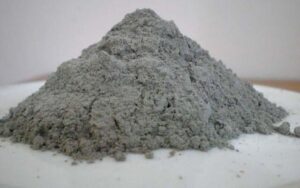
Use of Fly Ash in Reinforced Concrete: Advantages and Precautions
General Introduction
Since its discovery, concrete has been one of the most widely used building materials. Concrete, as a building material, is extensively consumed all over the globe for the construction of different small and large-sized building components and other such constructions, which include beams, columns, piers, slabs, culverts, dams, etc. The utilisation of concrete in a significant quantity is primarily due to its properties like strength and durability, which are extremely advantageous for the building and its components.
Concrete, as we know, contains cement, sand, aggregates (fine and coarse), water, and optional admixtures. This composition of concrete is generally utilised in all general constructions in either plain or reinforced concrete form. However, the admixtures can vary in quantity and are used according to the specific requirements of the building components.
We have seen an increase in the use of fly ash in recent years, particularly in reinforced concrete construction. Because of its unique properties, fly ash has been used to replace some of the cement in the composition of concrete. Fly ash, when combined with other raw materials to form concrete, imparts several benefits to the concrete, such as environmental friendliness, reduced cost, and enhanced strength and durability. Let us study the use of fly ash in reinforced concrete and its advantages and precautions in detail.
What exactly is fly ash?
Fly ash is a residue or leftover material that can be found in coal-based thermal power plants. The finely divided eco-friendly material is produced in thermal power plants by the combustion of pulverised coal. Fly ash is also known as flue ash, coal ash, and pulverised fuel ash (in the United Kingdom). Fly ash contains SiO2, Al2O3, Fe2O3, CaO, and LOI as its chief constituents. However, the amount of these components in fly ash is different for different coal types, which are bituminous, subbituminous, and lignite coal. Fly ash is spherical in shape, and its particle size varies from 0.5 m to 300 m.

Why is fly ash extensively used in reinforced concrete?
Fly ash is widely used as a constituent of reinforced concrete. It, however, replaces the Portland cement partially or fully in some cases. The utilisation of fly ash in concrete as an admixture can have great beneficial effects on the quality of concrete, such as increased workability, lower consumption of water or a lowered water-cement ration, a reduction in bleeding, and a lower heat of hydration. Aside from these, fly ash is relatively inexpensive because it was intended to be a waste material before being consumed by people for the preparation of reinforced concrete and the construction of concrete elements.
What are the effects of fly ash on concrete?
Fly ash has different effects on concrete according to its state, i.e., fresh concrete and hardened concrete. Let us study the effects of fly ash on both fresh concrete and hardened concrete.
Fresh Concrete
Following are the effects of fly ash on fresh concrete:
- The spherical shape of fly ash particles allows for greater workability at the same water-cement ratio. We can say that the amount of water is reduced to obtain similar workability.
- The fine particles of fly ash in reinforced concrete reduce the probability of bleeding due to the reduced water-cement ratio and improved workability.
- Adding fly ash to concrete also improves its ability to flow through pipes, better known as its “pumpability.”
Hardened Concrete
Following are the effects of fly ash on hardened concrete:
- Fly ash reduces the chances of thermal cracking in hardened reinforced concrete as it liberates a relatively lower amount of heat as compared to cement.
- It improves the resistance of concrete to damage from freezing and thawing.
- Fly ash, as compared to cement, lowers the risk of aggressive chemical reactions on hardened concrete and makes it more resilient and durable.
- It also improves the bond between concrete and reinforcement bars, as well as between old and new concrete.
These are some of the effects of incorporating fly ash into the composition of concrete.
Advantages of using fly ash in reinforced concrete
Incorporating fly ash as a material in the composition of concrete benefits reinforced concrete construction in several ways, such as:
Improves the compressive strength and durability of concrete.
- Reduces the ill effects on reinforced concrete, such as cracking due to a rise in temperature and bleeding.
- Fly ash is a cost-effective material. Hence, it can help optimise the overall cost of construction.
- It is an eco-friendly product, and unlike conventional Portland cement, fly ash does not release harmful gases, such as carbon dioxide, in large quantities. So, the utilisation of fly ash in concrete for reinforced concrete construction also reduces the harmful effects on the environment.
- The size of the particles of fly ash is very fine. Hence, it enhances the workability of the concrete as it reduces the water-cement ratio in the concrete mix.
- When fly ash is incorporated into the composition of concrete, it also allows a greater bond between the concrete element and the reinforcement steel bars. Also, it strengthens the bond between old and new concrete.
- Fly ash allows for a smooth finish as compared to normal cement concrete.
These are some of the advantages of using fly ash in reinforced concrete.
Precautions (demerits) of using fly ash in reinforced concrete
Fly ash is a material with great benefits for concrete construction. However, there are a few demerits to using the fine material in reinforced concrete. They are as follows:
- As compared to the traditionally used Portland cement-based concrete, fly-ashbased concrete takes more time to gain an equal amount of strength. As a result, many construction professionals avoid using fly ash in reinforced concrete construction.
- Due to the fineness of the particles, the addition of fly ash to reinforced concrete limits the use of air-entraining admixtures, which might affect the requirements of the engineers at times.
- A higher proportion of fly ash in the composition of concrete increases the salt scaling, which adversely affects the concrete component.
These are some of the demerits of incorporating fly ash in reinforced concrete.
Wrapping Up
Fly ash is a fine powdered material that is used as a primary constituent of concrete. The fly ash-based concrete benefits in several ways, and its excellent properties positively impact reinforced concrete construction. However, the use of fly ash has still been a question of doubt for many small and mid-sized builders as they lack the information and knowledge about the material. Fly ash, when combined with cement, aggregates, and water, forms a material similar to traditional cement-based concrete and makes it suitable for manufacturing and constructing plain and reinforced concrete elements with improved properties and cost effectiveness.





